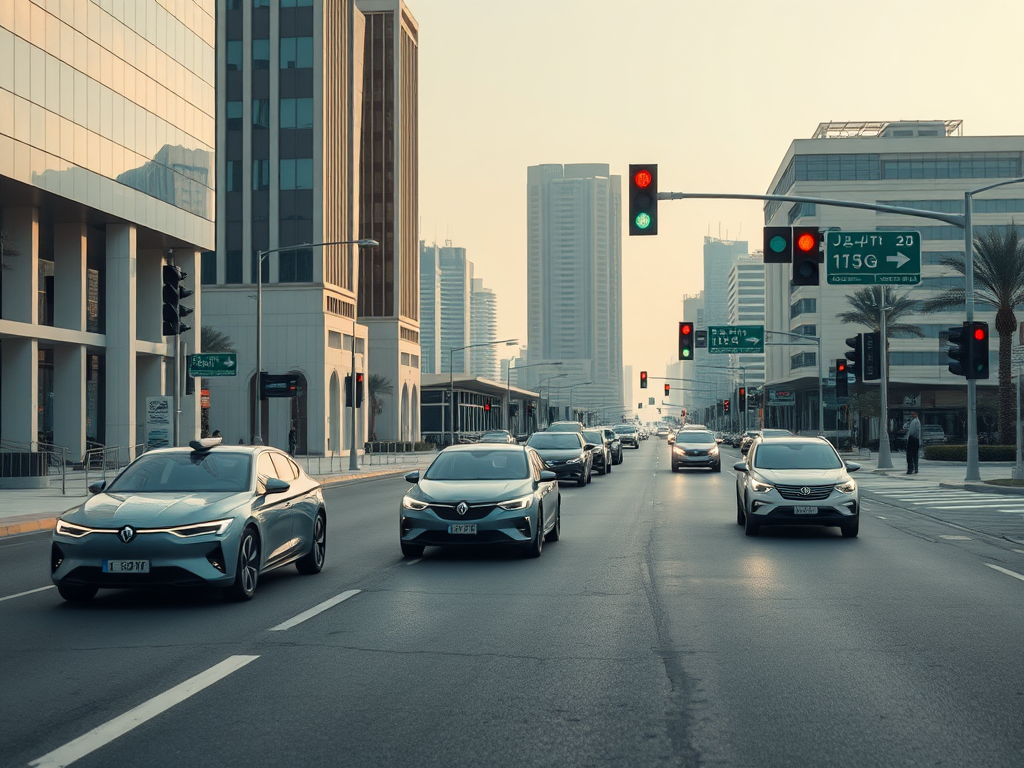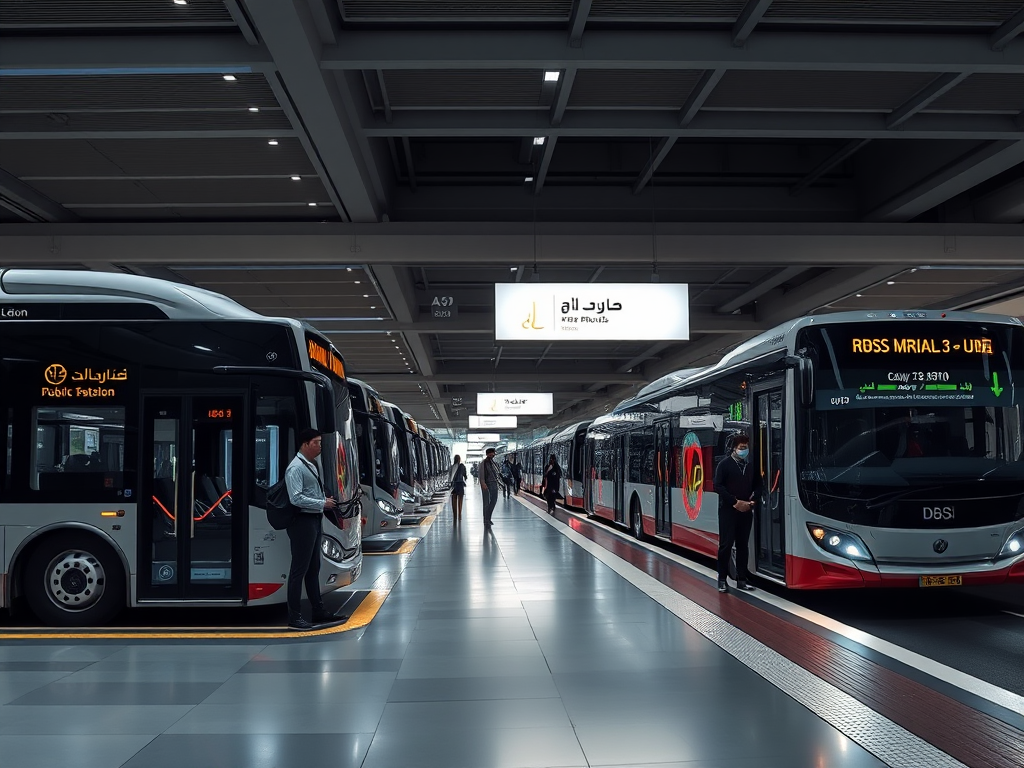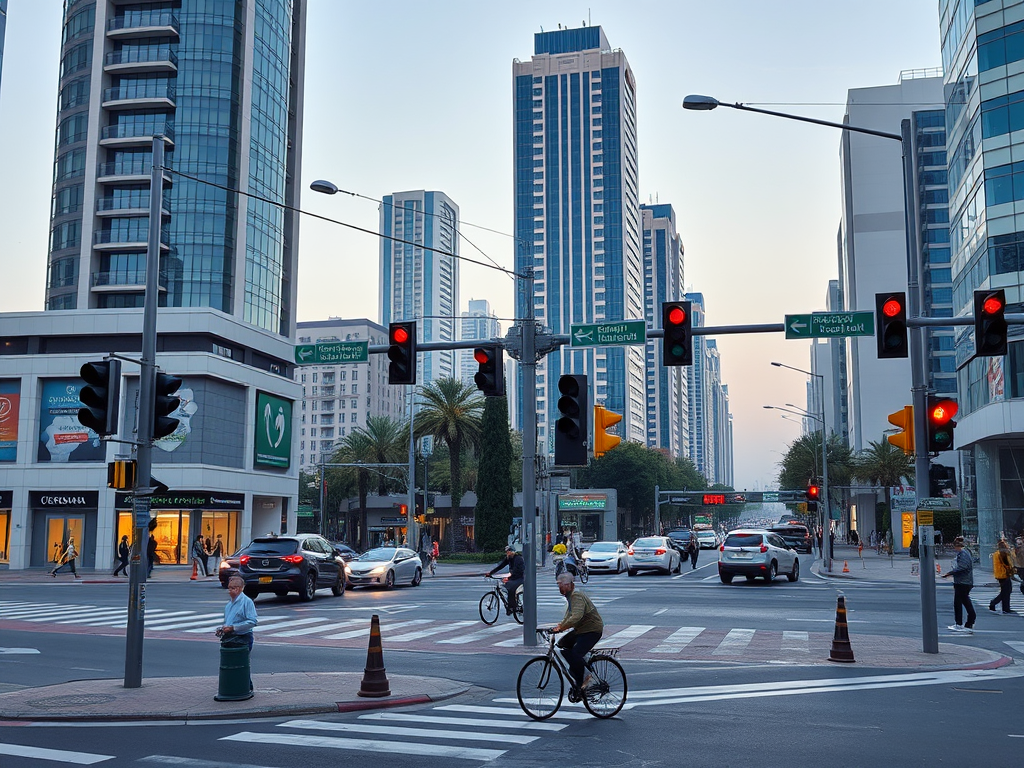
As cities worldwide grapple with the challenges of congestion, pollution, and efficient public transport, Dubai is emerging as a leader in the implementation of AI-powered urban mobility projects. These initiatives not only aim to streamline transportation but also to enhance the quality of life for residents and visitors. This article will explore the various ways Dubai is harnessing advanced technologies to revolutionize urban mobility, from autonomous vehicles to smart traffic management systems. By leveraging artificial intelligence, Dubai is positioning itself as a global pioneer in urban innovation, ensuring that mobility is both sustainable and efficient.
Innovative AI Applications in Public Transport

Dubai’s public transport system is undergoing a digital transformation through the integration of artificial intelligence. The emirate’s Roads and Transport Authority (RTA) is implementing various AI applications to improve operational efficiency and customer service. Key innovations include:
- AI-Powered Predictive Analytics: By analyzing traffic patterns and user behavior, AI helps predict delays and optimize schedules, which enhances the user experience.
- Smart Ticketing Solutions: AI algorithms are being employed to manage ticketing systems, making them smarter and more user-friendly.
- Real-Time Monitoring: AI systems facilitate real-time tracking of public transport vehicles, providing passengers with live updates.
- Route Optimization: Machine learning models are used to continually refine routes based on current traffic conditions and demand.
These innovations not only improve operational efficiency but also contribute to a greener footprint by reducing wait times and streamlining transit options.
Autonomous Vehicles: The Future of Mobility

Dubai is on the forefront of integrating autonomous vehicles into its urban mobility ecosystem. The government has set ambitious goals for the deployment of self-driving cars, aiming for 25% of all transport trips in the emirate to be autonomous by 2030. The implications of this initiative are vast:
- Enhanced Safety: AI-driven vehicles have the potential to significantly reduce traffic accidents, as they are designed to predict and respond to various road conditions.
- Increased Accessibility: Autonomous vehicles can provide transport solutions for people with disabilities, the elderly, and those who cannot drive.
- Reduced Traffic Congestion: By reducing the number of personal vehicles on the road, autonomous vehicles can ease traffic congestion and lower emissions.
- Cost-Effective Solutions: Utilizing shared autonomous vehicles can lower transport costs for users while maximizing vehicle usage.
Overall, the introduction of autonomous vehicles in Dubai is a significant step toward creating a smarter urban environment.
Managing traffic flow is an ongoing challenge for metropolitan areas, but Dubai is leveraging AI to develop smart traffic management systems that create a more efficient travel experience. The RTA has implemented several key technologies:
- Adaptive Traffic Signals: AI analyzes real-time traffic data to adjust signal timings, reducing wait times and improving traffic flow.
- Smart Sensors: Equipped with advanced sensors, traffic management systems monitor vehicle and pedestrian movement, providing valuable data for planning and optimization.
- Incident Detection Systems: AI-powered systems automatically detect accidents or traffic congestion, enabling prompt responses and minimizing delays.
- Integrated Control Centers: Centralized control hubs utilize AI to coordinate various aspects of urban mobility, leading to enhanced collaboration among different transport modes.
These systems not only decrease congestion but also promote safer roadways for both drivers and pedestrians.
Environmental Impact and Sustainability
Dubai’s AI-powered mobility projects are designed with sustainability in mind. By integrating these technologies, the emirate aims to reduce its carbon footprint and promote eco-friendly transport solutions. Key sustainability measures include:
- Electric Autonomous Vehicles: Investment in electric vehicles contributes to lower emissions and aligns with Dubai’s sustainability goals.
- Efficient Energy Usage: AI technologies reduce energy consumption by optimizing operational processes across the transport sector.
- Promotion of Public Transport: By providing more efficient public transport options, residents are encouraged to use fewer personal vehicles, further reducing emissions.
- Integration with Urban Planning: AI plays a role in urban planning efforts to create pedestrian-friendly areas, reducing reliance on cars.
These initiatives demonstrate Dubai’s commitment to promoting environmental awareness while simultaneously enhancing urban mobility.
Итог
Dubai’s AI-powered urban mobility projects represent a bold step into a future characterized by innovation and sustainability. By integrating advanced technologies into public transport systems, autonomous vehicles, and intelligent traffic management, the emirate is setting the stage for a revolution in urban mobility. These efforts not only focus on alleviating congestion and improving operational efficiency but also prioritize environmental sustainability. As cities worldwide observe Dubai’s progress, the potential of AI in transforming urban transport continues to inspire global initiatives, positioning the emirate as a leader in smart city innovations.
Часто задаваемые вопросы
- What is the main goal of Dubai’s urban mobility projects?
The main goal is to enhance transportation efficiency, reduce congestion, and promote environmental sustainability through AI technologies. - How is AI being implemented in public transport?
AI applications in public transport include predictive analytics, smart ticketing solutions, real-time vehicle tracking, and route optimization. - What percentage of trips is Dubai aiming to make autonomous by 2030?
Dubai aims for 25% of all transport trips to be autonomous by 2030. - What are adaptive traffic signals?
Adaptive traffic signals utilize AI to adjust signal timings based on real-time traffic data, improving traffic flow. - How do autonomous vehicles contribute to environmental sustainability?
Autonomous vehicles reduce reliance on personal vehicle use and often are electric, contributing to lower emissions and energy consumption.